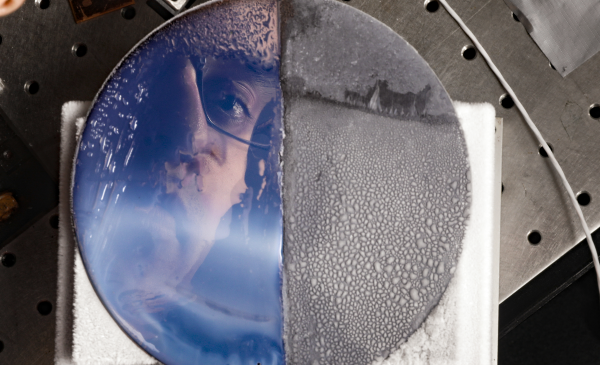Frost free
Text block one

As passengers board their flights during icy winter months, they must often wait as their
airplane is dowsed with thousands of gallons of deicing fluids. But as soon as the plane takes off,
most of the liquid is gone from the surface of the aircraft and ends up polluting freshwater streams
and lakes.
Mechanical engineering professor Sushant Anand and his student Rukmava Chatterjee set out to develop a longer-lasting alternative to conventional deicers that could also benefit other industries.
They ultimately developed an extensive family of more than 80 anti-freezing coatings, which can be classified as polymeric solutions, emulsions, creams, and gels. The formulations can be easily applied to aluminum, steel, copper, glass, plastic, or any industrial surface without preconditioning or expensive surface treatments.
“Our coatings are an all-in-one package that can delay formation of frost for extended hours and simultaneously cause any ice formed on its surface to easily shed off by a gentle breeze or simple substrate tilting,” Chatterjee said.
The coatings are a family of phase change material-based formulations and multifunctional coatings which can tailor solid foulant adhesion on functional surfaces, ranging from ice to bacteria, irrespective of their inherent material structure and chemistry. This was engineered by regulating how
chemicals leach out of the material system and by creating a lubricating surface layer that is both
slippery and non-freezing in nature.
The anti-freezing gels are also transparent, which is critical for applications like traffic signals, runway
lights that assist pilots during landings, automotive windshields, or building windows. “Since our anti-icing sprays are bio-friendly and anti-bacterial, we even think there is a potential to use them in agriculture to prevent crops from being ruined by severe frost,” Anand said.
“There is great potential in these materials for many applications, and I think the day when commercial versions of our materials come out just got closer.”